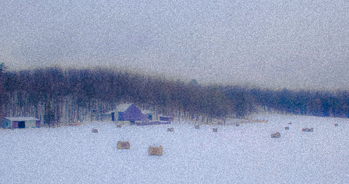In Maps the Truth is an Illusion
 Once upon a time there was a mapmaker who lived in the Northern hemisphere, and who from amongst the four cardinal directions, chose north as the primary direction at the top of the map. Not that it didn’t make sense. Men had taken their direction from the North Star for eons, but this was different than the religious maps that had existed until then, which often, at least for Christians, placed the east as the cardinal direction(as that was the direction of paradise). But this ancient mapmaker with his northern bent started a trend that has continued to this day. Our maps are oriented northward, and consequently they give primacy to the north.
Once upon a time there was a mapmaker who lived in the Northern hemisphere, and who from amongst the four cardinal directions, chose north as the primary direction at the top of the map. Not that it didn’t make sense. Men had taken their direction from the North Star for eons, but this was different than the religious maps that had existed until then, which often, at least for Christians, placed the east as the cardinal direction(as that was the direction of paradise). But this ancient mapmaker with his northern bent started a trend that has continued to this day. Our maps are oriented northward, and consequently they give primacy to the north.
For those of us who live in the north this doesn’t seem like an issue, but anthropologists and historians suggest that this emphasis on the north has colored how we think of the world. They posit that maps embody the interests of their creators and that emphasis on the north contributed to phenomena like African colonization, South American conquest, the Anglo-Indian Raj, and Orientalism, where northerners believed they had the god-given right to claim the land and ‘civilize’ the natives. Heck it wasn’t that long ago in human mapmaking history that we thought the south was populated by single footed beings who used their overlarge foot as shade against the killing southern sun. Anthropologists and historians propose that the northern cultures believed that they were the civilized nations. Therefore the south wasn’t, or so the story goes.
 There are those who say that the map structure itself with its focus on the north as at the top and the south at the bottom, created or embodied a thinking error that, in turn, created the sociopolitical situation in the world today with the north as the ‘have‘ nations and the south as ‘have nots.’
There are those who say that the map structure itself with its focus on the north as at the top and the south at the bottom, created or embodied a thinking error that, in turn, created the sociopolitical situation in the world today with the north as the ‘have‘ nations and the south as ‘have nots.’
All this illustrates that maps hold power beyond the simple placement of landscape features. We use maps for illustrating far more than roads and mountains and political boundaries. Maps are used to present information about populations and this information has incredible power. Poverty. Number of people per square mile. Alcohol consumption. The owner to dog ratio. All of these things have been presented in maps and once they are presented this way, the knowledge of the poverty or population density or alcohol use or dog to person ratio becomes the reality of a particular location. The trouble is that often these informational maps focus the viewer on only one thing to the exclusion of all else.
Case in point is a series of maps of a community I’m working with. These maps show the vulnerabilities of a community’s population by neighbourhood. Policy makers and managers who view these maps want to focus all their resources on the neighbourhoods with the highest percentage vulnerability. Sound like the right thing to do?
Perhaps. But what if I told you that the neighbourhood with the highest vulnerability also has one of the smallest populations? What if I told you that the vulnerable population of another neighbourhood, while being a smaller percentage, actually far outnumbers the vulnerable population of the first neighbourhood in terms of actual people? What do you think then?
And if I told you that the first neighbourhood contains virtually all the community resources of the combined neighbourhoods, would you expect the policy makers and managers to rethink their resource allocation decision?

The trouble is this often doesn’t happen. Well-meaning people take the face value of a map and think it’s the truth, instead of looking at the layers of truth behind the map. Often these layers hold just as many faults as the map we are looking at, but failing to look leaves all the layers unquestioned. When this happens, these well-meaning people may propagate a thinking error that, though well-intended, has the potential to lead map readers astray, just like that ancient map-maker’s work.









